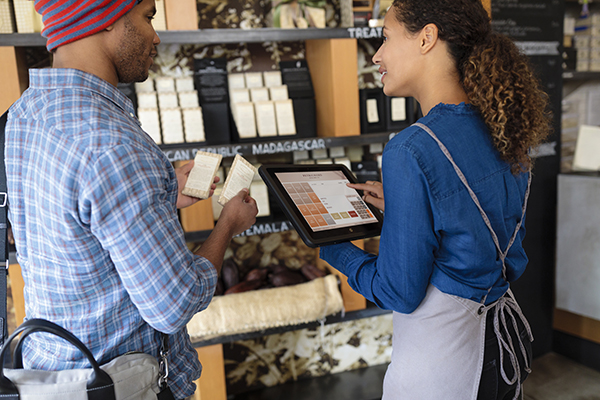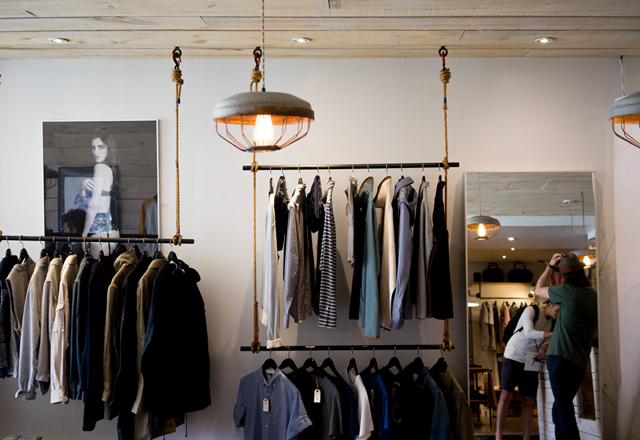
The retail landscape continues to evolve: big retailers are simultaneously expanding and contracting, and malls are examining their place among consumers.
Somewhat paradoxically, customers seem to be gravitating toward smaller, more curated experiences from well known and respected brand names.
Operational shifts and expansion like this requires flexibility and a broad network from a point of sale software system.
Retail Pro is an ideal partner for such moves, with Retail Pro Prism’s flexibility and partners spanning the US as well as across the world.
While a significant — and growing — number of sales are made online, brick-and-mortar shopping continues to appeal to shoppers, especially those who have immediate needs, or want to inspect a product before buying.
If high-end retailers can accurately predict what their target customers want in-store, trending data seems to indicate that’s a recipe for bottomline success.
One big question facing these large, established brands is, how can they attract shoppers who seemingly have adopted a more cautious attitude toward discretionary purchases?
Smaller has a larger impact on big retailers

Retailers, including Macy’s and Best Buy, are researching building smaller stores with strong integration between online and offline channels.
Retail Pro Prism is a great point of sale software for omnichannel retailers because it connects all your data for insight and operations that help you build better retail experiences.
Such strategies will help retailers cater to specific customer needs or demographics in a more focused way.
They can offer a curated selection of products that are tailored to the local market, which can attract customers looking for a more personalized shopping experience.
That’s easier said than done, particularly for a retailer with a New York flagship in Harold Square that boasts more than one million square feet of retail space.
Macy’s CEO said during a recent earnings call that the department store would be focusing on creating the “best stores, not the largest number of stores.”
In fact, although Macy’s has announced that it will close 150 underperforming stores during the next three years, it also said it will invest more heavily in its small-format retail brands, “Market by Macy’s” and “Bloomie’s.” The company reportedly aims to add 30 off-mall locations by the end of 2025.
Evolution of the mall and its traditional retailers

Macy’s joins a trend of large retailers with a well-heeled customer base that are leaving the confines of traditional, suburban malls where they have long been coveted as “anchors.”
Many anchor retailers, from Neiman Marcus to Sears, have faced dire economic straits and left malls, leaving property managers to reassess the need for storefronts to fill those vacancies.
As a result, many malls are experiencing a rebirth by including a new mix such as bowling, golf, fitness centers and even apartments.
Such planning benefits the remaining retailers by increasing foot traffic within the mall.
Best Buy is also testing offering a “curated selection” of products, Geek Squad services, and scan-and-go capabilities.
It tested the concept in late 2022 with a 5,000 sq.ft. location in Charlotte, N.C.
The off-mall location strategy of creating a slimmer, more curated customer experience has been successfully employed by Nordstrom through their Nordstrom Local brand.
One of the key reasons these locations are popular is their convenience factor.
Customers can easily return and pick up online orders.
In addition, customers tend to buy more merchandise once they are in the store.
According to Nordstrom, the Local brand’s average customer spends 2.5 times more than a regular Nordstrom customer.
Shifting the type of physical presence a retailer has is easier when a retailer uses a POS software with flexibility, especially when it comes to the back-end.
Retail Pro Prism’s architecture allows for independent and easy management of opening new stores around the world, easing any other number of questions this sort of change in operations creates.
The depth of customer analytics Nordstrom has accumulated allows it to provide targeted services it knows its shoppers appreciate.
Some of the services offered at Nordstrom Local stores include personal stylists, pickup and return for eCommerce orders, alterations, gift wrapping, dry cleaning and complimentary refreshments.
Such shopping perks illustrate the importance of understanding customer personas to draw and retain shoppers, in addition to the actual in-store merchandise.
Crucial to success in this new paradigm is continuing to exceed customers’ expectations, both in terms of product inventory and experience.
That’s a big ask in a slimmed-down space. Answering successfully requires knowing and understanding the customer’s needs, and being able to meet them not only today, but tomorrow as well.




















































